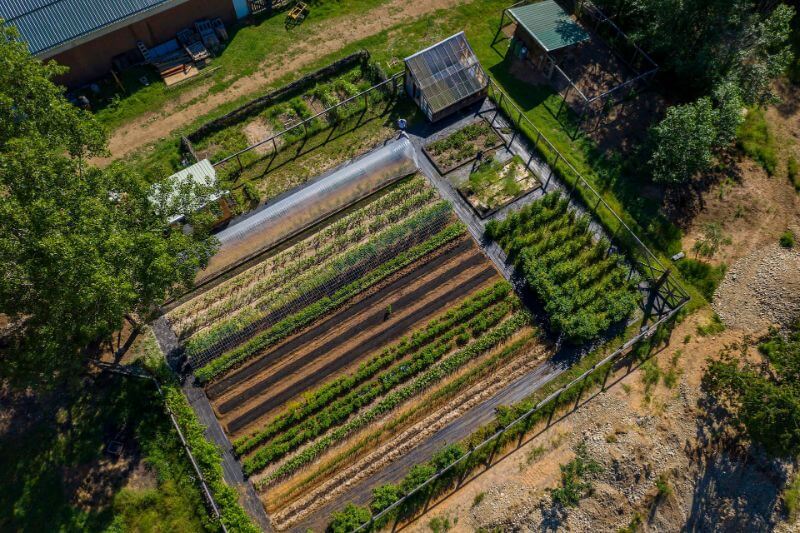Creating edible hedgerows on a 15 acre homestead is a wonderful way to enhance sustainability and encourage biodiversity. In this guide, we will explore how you can incorporate these living fences into your homestead, bringing benefits not just to your landscape, but also to your pantry.

Understanding Edible Hedgerows
Before diving into the practicalities, it’s essential to understand what edible hedgerows are. These are rows of shrubs or trees that produce edible fruits, nuts, or leaves. They serve multiple purposes, from providing food to acting as windbreaks, enhancing soil quality, and supporting wildlife.
Benefits of Edible Hedgerows
1. Sustainability and Self-Sufficiency
By integrating edible hedgerows, you can increase your homestead’s self-sufficiency. They offer a source of fresh produce, reducing the need to purchase from external sources. For tips on living sustainably, you might find inspiration in our article on living sustainably.
2. Biodiversity and Wildlife Habitat
These hedgerows create habitats for various species, promoting biodiversity on your land. Birds, insects, and small mammals find shelter and food, contributing to a balanced ecosystem.
3. Soil Improvement and Erosion Control
Edible hedgerows help in stabilizing the soil, preventing erosion, and improving soil health through the addition of organic matter from leaf litter and root systems.
Choosing the Right Plants
When planning your hedgerows, select plants that thrive in your local climate and soil conditions. Popular choices include hazelnuts, elderberries, and blackberries. Each plant type offers different benefits and requires specific care.
Climate Considerations
Consider your climate zone when selecting plants. Plants that are well-suited to your area will thrive with less intervention, making them more sustainable choices.
Soil and Site Selection
Test your soil to ensure it can support the plants you choose. Some plants prefer acidic soils, while others thrive in more alkaline conditions. Select a site that meets the sunlight and drainage needs of your chosen species.
Designing Your Edible Hedgerows
Layout and Spacing
Plan the layout of your hedgerows to maximize accessibility and sunlight. Proper spacing ensures that each plant has enough room to grow and receive adequate sunlight.
Companion Planting
Use companion planting strategies to enhance growth and pest control. Some plants, when grown together, can deter pests or boost each other’s growth.
Planting and Maintenance
Planting Techniques
Use proper planting techniques to ensure healthy growth. This includes digging the right size hole, carefully placing the plant, and watering adequately.
Pruning and Care
Regular pruning helps maintain the shape and health of your hedgerows. Remove dead or diseased wood and shape the plant to promote air circulation.
Pest and Disease Management
Implement natural pest and disease management strategies. Encourage beneficial insects and use organic solutions to tackle any issues.
Harvesting and Utilizing Edible Hedgerows
Harvesting Techniques
Learn when and how to harvest your produce to ensure maximum flavor and nutritional value. Proper harvesting techniques also support plant health.
Using Your Harvest
Explore various ways to use your harvest, from fresh consumption to preserving methods like canning or drying. This ensures you enjoy your produce year-round.
Integrating Edible Hedgerows into Your Homestead
Edible hedgerows can be integrated into various parts of your homestead, from property boundaries to garden edges. They not only provide practical benefits but also enhance the aesthetic appeal of your land.
Conclusion
Incorporating edible hedgerows into your 15 acre homestead is a fruitful endeavor. They offer numerous benefits, from boosting sustainability to enriching the local ecosystem. To learn more about sustainable practices, consider checking out our journey to sustainability here.

FAQ
What are the best plants for edible hedgerows?
Some popular choices include hazelnuts, elderberries, blackberries, and blueberries, chosen based on your climate and soil conditions.
How do I maintain my edible hedgerows?
Regular pruning, appropriate watering, and natural pest management are key to maintaining healthy hedgerows.
Can edible hedgerows really enhance biodiversity?
Yes, they provide habitats and food for various wildlife, contributing significantly to biodiversity on your homestead.
For more insights into modern homesteading, visit this resource.





